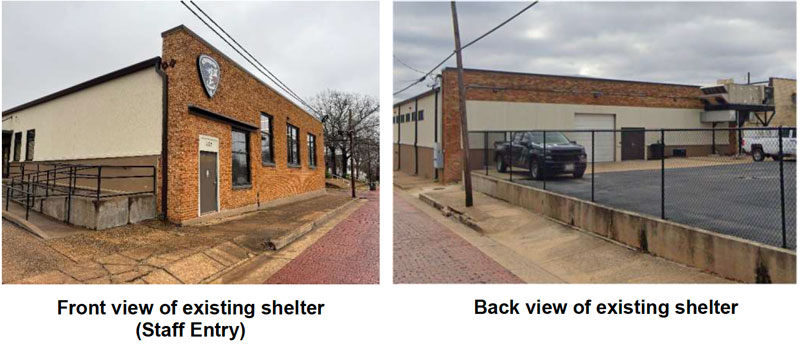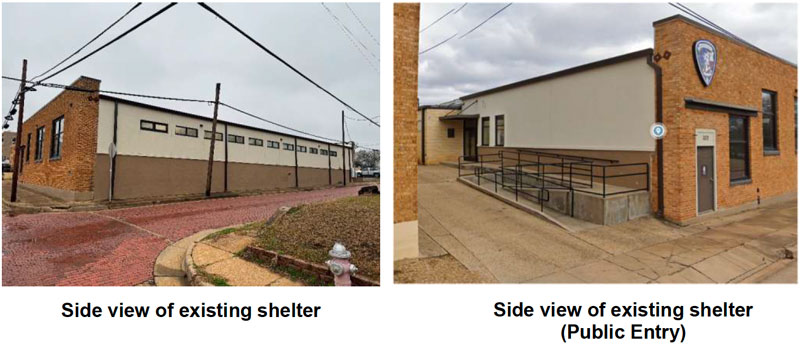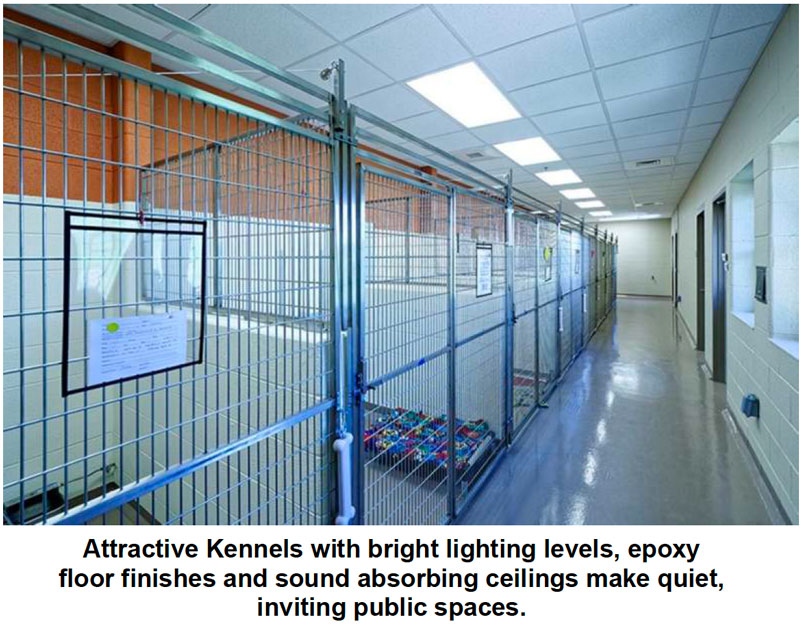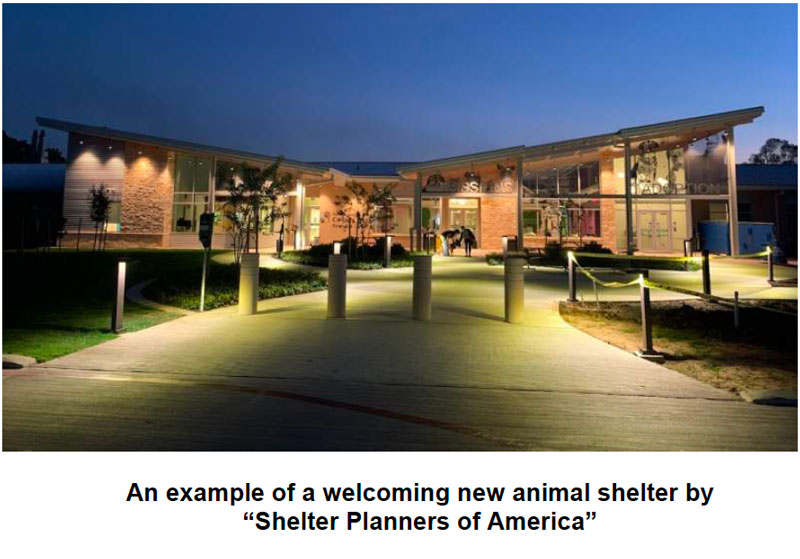Commissioners Court Notes
Please note: All agenda items are considered PASSED unless indicated otherwise.
OPEN SESSION:
PRESENTATIONS:
1. Presentation of employee recognition, longevity certificates, and service pins.
2. Receive presentation on Jail Feasibility Study.
Comments:
HDR came to Commissioners Court to present their findings on a Jail Feasibility Study. I was not on the Court when this Feasibility Study was first discussed. From what I could find in our records, this began under former County Judge Moran back in 2022. The last jail expansion occurred between 2011 and 2015 at a cost of approximately $35.6 Million. The cost of the feasibility study, according to the Professional Service Agreement from 2022 was $116,250.
Judge Franklin asked HDR to come to court to update the numbers and to show what may be before the voters “way down the line”. Halden Talley from HDR presented the majority of the presentation. You can flip through the slides in the presentation if you’d like to see all the details through the link below.
There is no doubt that Smith County is growing and with growth comes more crime. According to HDR, it appears that our incarceration rate has declined since 2022. COVID restrictions slowed the court system starting a backlog of trials. It took some time to unwind. Our courts are doing a phenomenal job clearing their dockets and the jail population hovers around the 900 mark. This expansion proposes 552 additional beds. Our current bed count is 1092. Of the 552 proposed new beds, 384 will be for general population and 168 for medical/mental health beds. They are proposing two floors for mental health beds. Mental Health inmates cost more per day to house and if they are violent, they are required to have more supervision. The Detention Officer to Inmate ratio can be 1:1 for violent mental health inmates. The proposed total project cost, at today’s rates, ranges from $170 Million to $184 Million.
Current Debt for the County:
The Smith County taxpayers are already on the hook for $325 Million in debt. That is almost $1500/per person in Smith County – every man, woman and child. The taxpayers will pay on this debt until 2048. I will be 70 years old in 2048! To build this jail expansion in the next 5 years, the voters would have to approve a bond.
Bonds are bondage!
Smith County lacks a 5-year business plan. What I’ve noticed is that the county operates reactively, with no forward-thinking strategy to manage recurring expenses, ultimately harming taxpayers. For example, Smith County is constructing a new courthouse but has not yet planned to expand housekeeping or maintenance crews to handle the increased square footage. Having experienced both remodels and new builds, I know firsthand that no project is flawless—maintenance issues always arise. Our Facilities Services Director knows that the public expects our premiere building to be impeccably clean and fully operational on day 1 but he is understaffed for the facilities we manage today. Smith County must develop a 5 year plan to outline a forward-looking vision for our taxpayers and our county departments.
The Financial Crimes Intelligence Center:
According to the presentation, this jail expansion will take out the Financial Crimes Intelligence Center main office. The FCIC, located next to the jail and operated by the Smith County District Attorney’s Office, plays a critical role in combating financial crimes like credit card skimming. However, I have questions about the County’s plans for this agency since I’m not allowed to attend the Capital Improvement Planning meetings where these decisions are discussed.
Here are the key questions I have:
- What is the plan for relocating the FCIC?
During court I asked about the plan for FCIC. Judge Franklin said that no plan currently exists for moving the FCIC. Without a clear strategy, how will we ensure this essential agency continues its work without disruption? - What will it cost to provide a new home for the FCIC?
Will the County construct a new building, or are there existing county-owned facilities that are empty and suitable for the FCIC’s needs? If a new facility is required, what are the estimated costs for land acquisition, construction, and equipment? The jail expansion will force the county to spend even more tax dollars on the relocation of this vital office.
Operational Costs of the Jail:
The recent feasibility study for expanding our county jail estimates a construction cost of up to $184 million. However, this figure does not include ongoing operational expenses, which are critical to understanding the full financial impact. I asked about some of the operational costs in court that day. Chief Pinkerton said it would take a couple of months to calculate those costs.
Key Points
- Inmate Increase: The expansion would house 552 additional inmates (384 general population, 168 mental health inmates).
- Recurring Costs: These include staffing, meals, uniforms, maintenance, utilities, medical services, and transportation. Exact figures are still being calculated, but rough estimates are provided below.
Estimated Annual Costs
- Staffing Costs
- General Population Inmates (384):
- Staffing Ratio: 1 detention officer per 48 inmates.
- Officers Needed: 384 add’l inmates ÷ 48 = 8 officers per shift. With 4 shifts, 32 new officers are required.
- Salary Cost: Starting pay is $46,898 per officer. 32 officers × $46,898 = $1.5 million annually (excluding benefits).
- Mental Health Inmates (168):
- Assumption: Half (84) are violent mental health inmates, requiring a 1:1 officer-to-inmate ratio.
- Officers Needed: 84 officers per shift. With 4 shifts, 336 new officers are required.
- Salary Cost: 336 officers × $46,898 = $15.7 million annually (excluding benefits).
- Preliminary Staffing Cost: $1.5 million + $15.7 million = $17.2 million annually (starting salaries only, not including benefits).
- Note: 84 beds remain unaccounted for, which increase staffing needs further.
- General Population Inmates (384):
- Meal Costs
- Cost per Meal: Approximately $2 per meal per inmate.
- Annual Meals: 552 inmates × 3 meals/day × 365 days = 604,440 meals.
- Total Cost: 604,440 meals × $2 = $1.2 million annually.
- Uniform Costs
- Uniforms per Inmate: Approximately $40 per inmate; shirt, pants, socks and shoes
- Uniforms assigned to each Inmate: 2
- Total Cost: (552 inmates × 2 uniforms) × $40 = $44,160
- Note: This is initial uniform cost only. Laundry services not included.
- Other Costs (Not Fully Estimated)
- Maintenance, Cleaning, Utilities, Medical: These costs will increase with more inmates, but specific costs are pending further analysis.
- Transportation: Additional transport vehicles will be needed, with replacements required every 150,000 miles.
Total Estimated Annual Cost
- Minimum Estimate: $17.2 million (staffing) + $1.2 million (meals) + $44,160 (uniforms) = $18.4 million annually, excluding benefits, other operational costs, and transportation.
- Pending Data: Chief Pinkerton estimates it will take a couple of months to provide precise figures for all recurring expenses. I have not had a meeting with the Chief to sharpen these estimates. My estimates above are just food for thought on operational costs.
What This Means:
The $184 million estimated construction cost is just the beginning. The annual operating costs for the expansion will exceed $18.4 million. For FY25, the adopted budget for Jail Operations was $29,520,371. As your County Commissioner, I’m committed to ensuring we have a clear picture of all expenses before moving forward. I’ll keep you updated as we receive more detailed calculations.
The Timeline:
Design: 10 months
Permits/Approvals/Procurement/Mobilization: 4 months
New Construction: 30 months
Renovation: 12 months
Total: 4 years, 8 months
In Texas, it typically takes 12 – 18 months to propose and pass a bond election. Time frame from initial bond proposal to completion of the renovation:
6 years, 2 months
Chief Pinkerton said at the 29-minute mark in the Commissioners Court meeting video “…my opinion is that in 5 years… we need a jail.”
Judge Franklin said that he had no plans to propose a bond and that this expansion would hopefully not need to be addressed for many, many years down the road. It will still need to be addressed.
- What are we doing to prepare for that in the future?
- Will the Commissioners Court solely rely on the taxpayers to approve a bond in the a few years?
- How do we plan to pay for the increase in operational costs?
- Have we exhausted all discussions of bail reform to reduce pretrial detention for low-risk, non-violent offenders with the Council of Judges?
- How well are the specialty courts clearing out inmates?
- What are we doing to explore the possibility of expanding electronic monitoring to reduce the inmate population?
Exploding jail populations are a problem all over the state. Some counties share a facility with multiple counties for their pretrial felons. For some counties, it is cheaper to house inmates out of county. There isn’t a one-size-fits-all answer to this problem. The last thing I want to see is a bond proposal. The County has enough debt. It is our duty to find a solution to this problem without increasing the burden to the taxpayer.
Smith County Animal Shelter


3. Receive presentation on Animal Shelter Needs Assessment.
Comments:
In January, the Commissioners Court approved a Needs Assessment Study for Smith County Animal Control. This study is the first step in planning for a new shelter. Judge Franklin spoke about earmarked funds for this project in a December 2024 meeting of the previous Commissioners Court.
Problems with the existing shelter:
- Facility was built in the early 1900s and was used for laundry services
- Concrete floors with poor drainage increase cleaning processes
- Flow of the facility increases workload
- Dog Kennels are not ideal for ease of cleaning & maintaining the animals
- Public interaction with the animals is limited
- Facility is downtown amidst concrete and traffic; not conducive for walking the animals and playtime with potential adoptive families
Key Point:
The only factor that truly affects the number of animals you adopt is the number of people, or rescue groups, who visit the shelter with the intention of adopting.
To Increase Adoptions:
- Visible shelter location
- Visibility of all animals
- Weekend and evening hours
- Website pet listings
- Attractive, welcoming shelter
- Well-groomed and healthy animals
- Friendly staff
- Adoption requirements that are not too restrictive
- Reasonably low adoption fees
- Promotion of adoptions in all local media
- Special adoption events
- Help of rescue groups and transfer programs

Animal Housing Needs:
The Needs Assessment Study clarifies that holding more animals longer does not significantly increase adoptions; increasing visitors for adoptions is key. The proposed shelter plans for 50 dogs (21-day average length of stay, down from 31-61 days) and 6 cats, with no dedicated space for other species.
Two building space options were proposed:
- Option 1: 8,932 sq. ft. enclosed, 3,465 sq. ft. exterior (total 12,397 sq. ft.), including administrative, medical, animal housing, and support areas.
- Option 2 (Reduced Scope): 6,410 sq. ft. enclosed, 2,169 sq. ft. exterior (total 8,579 sq. ft.), with reduced administrative and no medical clinic.
The new shelter should be a welcoming facility with durable, low-maintenance materials, natural lighting, and landscaping. Dog kennels will be indoor/outdoor with sound control, and cat housing will use two-compartment cages. Modern features include epoxy flooring, automatic waterers, and advanced HVAC for odor and disease control.
Current staff includes 10 full-time positions (1 supervisor, 1 coordinator, 4 ACOs, 4 kennel techs). Future additions may include an ACO field supervisor, shelter assistant, and part-time vet. Volunteers could enhance operations.
Current annual cost is $633,141 ($888/animal), higher than average due to low intake. The new shelter’s costs may initially be similar but could rise with improved HVAC and population growth.
Proposed Cost for New Facility:
- Option 1: $4.34M-$5.58M (construction), $5.38M-$6.93M (total, excluding land).
- Option 2: $3.00M-$3.86M (construction), $3.73M-$4.79M (total, excluding land).
Location, location, location…
Three potential sites were evaluated for visibility, accessibility, zoning, topography, wetlands, size, and shape. Site 2 scored highest (32/35), followed by Site 1 (31/35), and Site 3 (16/35) due to zoning and environmental issues. Sites need 2-3 acres, 33 parking spaces, and features like dog exercise yards and walking trails.
I am interested in exploring Site 1 as the prime location for its easy access from the Loop and its proximity to the majority of the Animal Control call-outs.
- Facilitates faster response times for Animal Control calls
- Reduces mileage and wear & tear on county vehicles
- Prime location for visitors; easy to find
- Yard area for animals
- Potential for walking trails
- Natural environment for visitors to meet new dogs for potential adoption

Since the last meeting, I’ve been left in the dark about potential land acquisitions, unable to attend the Capital Improvement Planning Committee meetings. I do not agree with the Commissioners being disconnected from these critical discussions that shape our community’s future. In court, Judge Franklin shared his reasoning: Commissioners are barred from attending subcommittee meetings—like the Insurance Committee, Capital Improvement Planning Committee or Department Head meetings—to prevent a quorum, which would require three members of the Commissioners Court. To my knowledge, I am the only Commissioner that wants to sit in on these meetings.
Hoping for a solution, I suggested a rotation where a single Commissioner could sit in on these meetings to stay informed. Unfortunately, Judge Franklin explained that even this would be too burdensome, as each new Commissioner would need to be brought up to speed, taking time away from the committee’s work. I’m caught between wanting to serve our community fully and being held back by procedural walls. At the very least, we should get a briefing from a committee member other than the County Judge. I will continue to look for ways to resolve this issue.
COURT ORDERS
COMMISSIONERS COURT
4. Consider and take necessary action to approve an application for the Texas Comptroller of Public Accounts distribution of Unclaimed Property Capital Credits for 2024 and authorize the county judge to sign all related documentation.
Comments:
Electric cooperatives that have lost contact with a previous customer sometimes report capital credits to the Comptroller’s office as unclaimed property. Texas law allows counties to claim a portion of unclaimed capital credits originating from their county and use them for specific programs. We approved the application for unclaimed property capital credits.
ELECTION’S OFFICE
5. Consider and take necessary action to approve an Order changing voting precinct boundaries to be effective January 1, 2026, pursuant to Texas Election Code §§ 46.006 and 42.031.
We approved the new precinct maps that we discussed at the April 15th meeting. That report is on my website with the presentation by Michelle Alcon, Smith County Election Administrator.
PURCHASING
6. Consider and take necessary action to approve Smith County Purchasing to utilize the Region 19 – Allied States Cooperative and authorize the county judge to sign all related documentation.
Comments:
Joining Co-ops expands our buying power. There is no additional cost to the county for joining this co-op.
INFORMATION TECHNOLOGY
7. Consider and take necessary action to approve a contract with Conterra Ultra Broadband, LLC for a secondary fiber internet service through the Region 19 – Allied States Cooperative and authorize the county judge to sign all related documentation.
Comments:
Through this contract, Conterra can provide a backup for internet service should the primary provider experience an outage. The cost is $825 per month or $9,900 annually. Conterra has been in business for over 30 years and has over 15,000 miles of fiber services. Communications and electronic systems are crucial for departments to continue operations. It impacts every department. This is a proactive approach to protecting the citizens of Smith County from a government shutdown due to loss of service.
By failing to prepare, you are preparing to fail.”
Benjamin Franklin
8. Consider and take necessary action to approve a contract for website services with CivicPlus through U.S. General Services Administration (GSA) Cooperative Purchasing and authorize the county judge to sign all related documentation.
Comments:
Be on the lookout for a new Smith County website as we head into the new year! Smith County’s current website was developed approximately 10 years ago by Vision Internet who was subsequently acquired by Granicus who is our current provider. With recent accessibility issues being raised by the Department of Justice and with several of the issues embedded in the code provided, the IT Department had budgeted to migrate to a new provider in this current fiscal budget year. Civic Plus provides websites for many counties throughout Texas and the US with over 5000 agencies online. They provide advanced accessibility support including a tool that allows the public to automatically adjust contrast, font size, color, etc. to meet disability requirements. They currently provide web services for counties such as Kaufman, Midland, Ellis, Brazos, Williamson, Hidalgo, Denton and Bexar Counties.
The startup cost for the project will be $88,712.05. After this first year, the annual cost will be $34,469. They anticipate the change to take anywhere from 6 to 8 months. Overall, the new site will be easier to navigate and will comply with ADA accessibility. The next item that will have to be addressed is a web-based product that will allow for a library of documents to make public access to pertinent information easier. This could decrease the amount of Public Information Requests for documents as well. When the county has a library of documents available for browsing and downloading, the public will have a new level of transparency in government. That’s a step in the right direction!
RECURRING BUSINESS
ROAD AND BRIDGE
9. Consider and take necessary action to authorize the county judge to sign the:
a. Final Plat for Donald Smith Subdivision, Precinct 2, and
b. Final Plat for Tiger Run Precinct 2
10. Receive pipe and/or utility line installation request (notice only):
a. County Road 3129, City of Winona, road bore for gas line, Precinct 3,
b. County Road 461, 431, 4196, 492, MetroNet, install aerial cable on existing poles, Precinct 4,
c. County Road 431, 4137, 4200, MetroNet, install aerial cable on existing poles, Precinct 3,
d. County Road 411, 472, 433, 4161, 4212, 4140, Vexus, install aerial cable on existing poles and underground cable, Precinct 3,
e. County Road 436, 4208, Vexus, install aerial and underground cable, Precinct 3,
f. County Road 471, 427, 489, 4138, 490, 429, 493, 4225, Vexus, install aerial and underground cable, Precinct 4,
g. County Road 472, 474, Vexus, install aerial cable on existing poles, Precinct 3,
h. County Road 433, 463, 472, 474, 475, Vexus, install aerial and underground cable, Precinct 3,
i. County Road 431, 4198, 4200, 4197, 499, Vexus, install aerial cable, Precinct 3,
j. County Road 423, 1135, Vexus, install aerial cable to existing poles, Precinct 4,
k. County Road 1137, 1138, 1156, MetroNet, install aerial cable to existing poles, Precinct 4,
l. County Road 1143, 1125, 1156, 1372, Vexus, install aerial cable to existing poles, Precinct 4,
m. County Road 1125, 1154, 1155, 1267, 1143, Vexus, install aerial cable on existing poles, Precinct 4,
n. County Road 4134, 1125, 1154, 1155, 1155N, 1264, Vexus, install aerial cable on existing poles, Precinct 4, and
o. County Road 1345, 1145, 1143, 4134, Vexus, install aerial cable on existing poles, Precinct 4.
AUDITOR’S OFFICE
11. Accept monthly Auditor/Treasurer report and Executive Summary for March 2025.
12. Consider and take necessary action to approve and/or ratify payment of accounts, bills,
payroll, transfer of funds, amendments, and health claims.
ADJOURN
